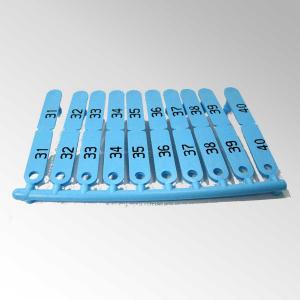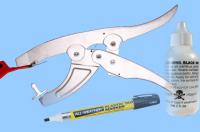Like our metal ear tags, our Ovitag plastic ear tags are a popular choice for livestock owners and farmers. Made of tough nylon, these ear tags are durable and long-lasting. Because they come in six different colors (yellow, orange, blue, green, white, and red), they can be used to mark vaccinations and easily distinguish the breed and age of the tagged animals. They are especially suitable for sheep, goats, and other thin-eared animals. Depending on the specific application, tags can be blank, numbered, lettered, or numbered and lettered.
Are you thinking of adding sheep to your livestock? Or are you looking to start and need some helpful information. Well we've put together a great guide to choosing sheep breeds and lambing: Click Here to See.


